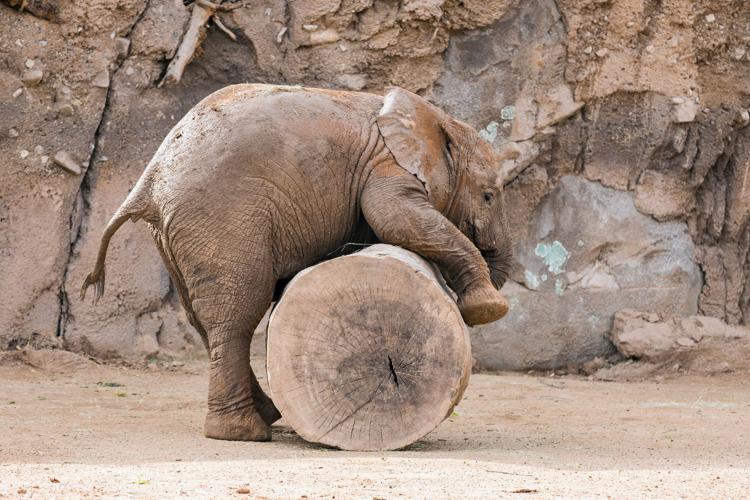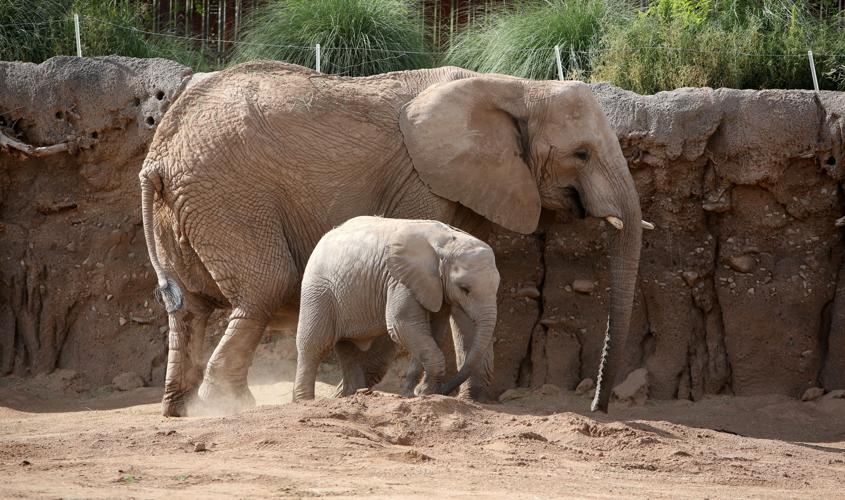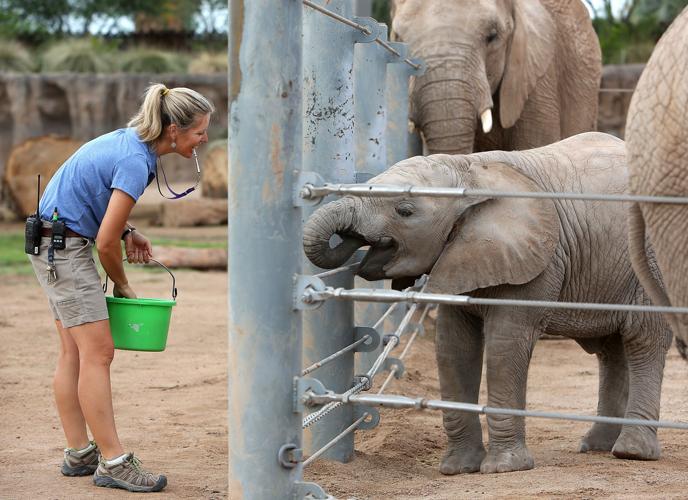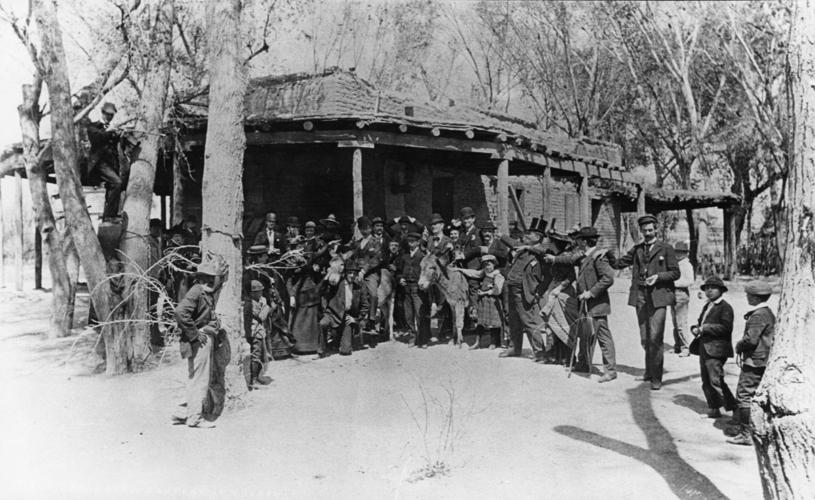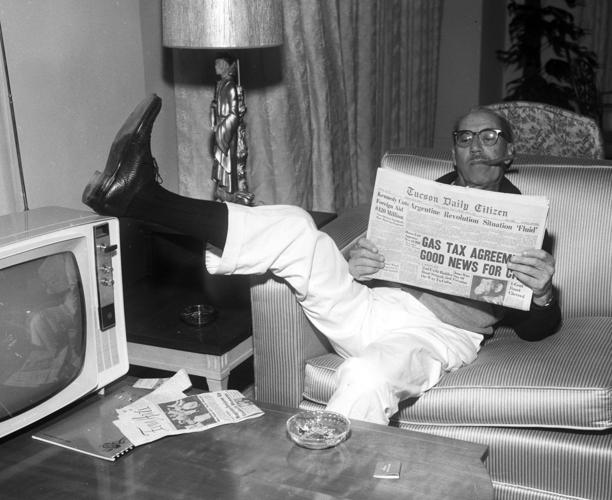Tucson celebrates a couple of big birthdays this week:
The city turns 241. And Nandi, the star of Reid Park Zoo, enters her terrible twos.
Celebrations, clearly, are in order.
But first, five facts about each that you may not know.
Nandi
1 She now weighs 1,615 pounds. That’s up from 970 pounds a year ago. It’s a hefty weight gain and a sign that Nandi, an African elephant calf, is growing just fine.
2 Though she is still suckling — elephants do until they are about 2 — Nandi gets her fill of solid food, as well. Dry food is the main entree.
3 When she was younger, Nandi was heavily protected by her mother. And she was a tad shy. These days, she’s initiating play with her brother Sundzu. And she is spunky.
4 Cruise by Nandi’s home at the Reid Park Zoo and you are likely to find her frolicking in the pool — a new activity for her.
5 Speaking of frolicking: Nandi loves the mud and recently has found the courage to independently dive into the slimy stuff all by herself.
Tucson
1 According to the 1881 Tucson Directory, a wagon, harness and “two good mules” were bought for the town of Tucson’s use. Later that year, they were sold “by reasons of being too expensive to operate.”
2 That same 1881 directory listed all the town’s inhabitants with their occupations and addresses, gave a history of Tucson, ventured a look at the future, and laid out some rules and regulations. Among those: butchering must be done outside the village limits, and the town marshal was to be paid $20 a month.
3 In the 1880s, Levin’s Park was a happening spot. Though open to the public, it was privately owned by Alex Levin, a city councilman and proprietor of Pioneer Brewery, where, no doubt, the lager served in the park came from. The park sat at the corner of North Granada Avenue and West Congress Street. The Tucson and Tombstone General Land Business Directory for 1883-84 said the park featured a skating rink, shooting gallery, bowling alley and a dancing pavilion. It was also home to a girls school. The Arizona Citizen newspaper reported in April 1867 that it was “a great adornment and a credit to Tucson.” Eight years later, a commentary in the Arizona Star (now the Arizona Daily Star) declared it was time for the park to go. “The nightly consorting of the vile and the vicious within its precincts, has made its name the synonym of iniquity.”
4 Tucson attorney and legislator C.C. Stephens was instrumental in bringing the University of Arizona to the Old Pueblo. But voters here were not impressed. At the time, Tucson was the largest city in the state and the territorial capital. But during the legislative session of 1877, Yavapai County officials joined forces with politicians from Maricopa County and voted to move the capital to Prescott. The Arizona Star blamed Stephens, and scoffed at the idea of the university here. The community “does not care a fig” about a school, said the paper. Tucson thought it had the muscle to bring the capital back, seeing how it was so populated, and officials tried for eight years. Finally, local lawmakers saw it was futile and concentrated on bringing the school here. Still, Tucson residents weren’t happy. Bribe money — $4,000 — was collected to try to get the votes to bring the capital back. But it was too late. The Citizen wanted Stephens railroaded out of town. Less than two years later, 40 acres were secured for the campus, courtesy of a couple of gamblers and a saloon keeper. By that time, feelings had softened. “The founding of a territorial university in our midst is the most important step in the development of Arizona,” the Star said. Stephens even gave a speech at the 1887 groundbreaking. Four years later, classes began. They would have started sooner, but planners couldn’t agree on the first building’s design — some argued for two floors, others one. The compromise: When Old Main opened, it had a tall basement on the ground floor, sitting under the one-story building. Source: “A History of the Old Pueblo from the 1854 Gadsden Purchase,” by David Devine.
5 The arts have long been central to Tucson, and over the years the famous came here to entertain. Or just relax. A sampling: In 1963, Groucho Marx starred in a six-day run of the play “Time for Elizabeth” at the Temple of Music and Art; movie star Veronica Lake was in the play “Bell, Book and Candle” at the Tucson Tent Theatre in 1956; Vincent Price, Raymond Burr, Kathryn Grayson and Scott Brady came to Tucson in 1957 to film “Lone Woman,” a “Playhouse 90” TV episode; comedian Lou Costello visited here in ’58, and Elvis Presley shook things up at Tucson Rodeo Grounds in 1956. Elizabeth Taylor visited often, and shot a few movies here. Some say she was going to buy a house in El Encanto until the press got wind of it.


